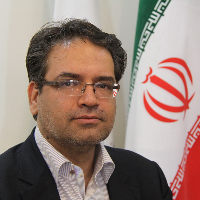Understanding the Morphological Evolution of Armenian Churches in New Julfa and its Interaction with the Architecture of Isfahan
Today’s country of Armenia, a part of the ancient Urartu, as the first land that officially accepted Christianity, has built the oldest churches and has turned the old temples into churches. By the Armenians’ migration to Isfahan and, simultaneously, the establishment of the New Julfa during the reign of Shah Abbas the Great, the churches appeared in a different form. The construction of churches benefited ancient experiences whilst taking into consideration the Shah’s decree that new constructions should not conflict with the capital’s buildings. It seems that the previous studies on the New Julfa churches have not paid enough attention to the architectural and the cultural relations of the new context. Understanding the process of convergence between the Armenian religious architecture in New Julfa and the architecture of Isfahan, and its results could be applied in urban restoration and regeneration projects, especially in the Julfa neighborhood, which specifies the necessity of this research. Research
The current study aims to find out the morphological transformations of the physical-spatial structure of the main building of churches in New Julfa, considering the interaction between the architecture of New Julfa and Isfahan’s prominent architecture. The study tries to answer these questions: Which type is generative and the initiator of the progress of church building morphology? How the architecture of the main building of churches has been converging toward the prominent architecture of Isfahan within their morphology evolution process? Research
The research is carried out using an interpretive-historic method and the data is collected according to available documents and field observations.
The outcome of the research implies the principle of some kind of restriction in the form of the Armenian church building. The existence of a generative type and getting influenced by the architectural techniques of the Shah Abbas period is confirmed in the course of formal evolution. Compared to the Isfahan prominent architecture of this period, the morphological changes of the main building in the churches are indicative of a tendency to converge to the Iranian style. The St. George Church is the first church building with the features of Iranian architecture, which provides the possibility of subsequent physical-spatial developments. The physical-spatial structure of the church of Holy Mother of God and the Bethlehem church is comparable to the structure of Sheikh Lutfollah and Abbasi Jame’ mosques, which indicates how the physical-spatial structure of the generative type developed.
- حق عضویت دریافتی صرف حمایت از نشریات عضو و نگهداری، تکمیل و توسعه مگیران میشود.
- پرداخت حق اشتراک و دانلود مقالات اجازه بازنشر آن در سایر رسانههای چاپی و دیجیتال را به کاربر نمیدهد.




